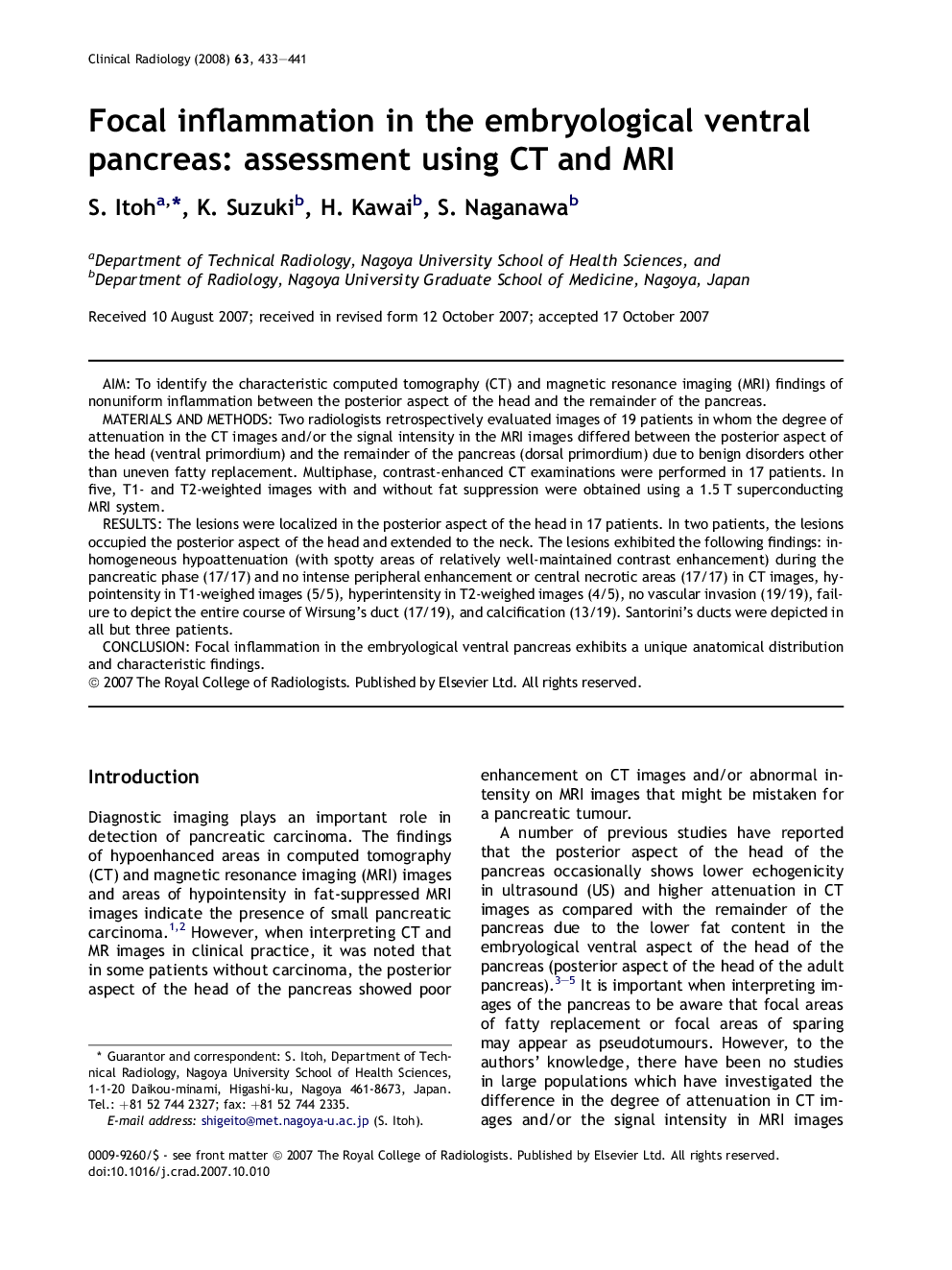| Article ID | Journal | Published Year | Pages | File Type |
|---|---|---|---|---|
| 3983101 | Clinical Radiology | 2008 | 9 Pages |
AimTo identify the characteristic computed tomography (CT) and magnetic resonance imaging (MRI) findings of nonuniform inflammation between the posterior aspect of the head and the remainder of the pancreas.Materials and methodsTwo radiologists retrospectively evaluated images of 19 patients in whom the degree of attenuation in the CT images and/or the signal intensity in the MRI images differed between the posterior aspect of the head (ventral primordium) and the remainder of the pancreas (dorsal primordium) due to benign disorders other than uneven fatty replacement. Multiphase, contrast-enhanced CT examinations were performed in 17 patients. In five, T1- and T2-weighted images with and without fat suppression were obtained using a 1.5 T superconducting MRI system.ResultsThe lesions were localized in the posterior aspect of the head in 17 patients. In two patients, the lesions occupied the posterior aspect of the head and extended to the neck. The lesions exhibited the following findings: inhomogeneous hypoattenuation (with spotty areas of relatively well-maintained contrast enhancement) during the pancreatic phase (17/17) and no intense peripheral enhancement or central necrotic areas (17/17) in CT images, hypointensity in T1-weighed images (5/5), hyperintensity in T2-weighed images (4/5), no vascular invasion (19/19), failure to depict the entire course of Wirsung's duct (17/19), and calcification (13/19). Santorini's ducts were depicted in all but three patients.ConclusionFocal inflammation in the embryological ventral pancreas exhibits a unique anatomical distribution and characteristic findings.
